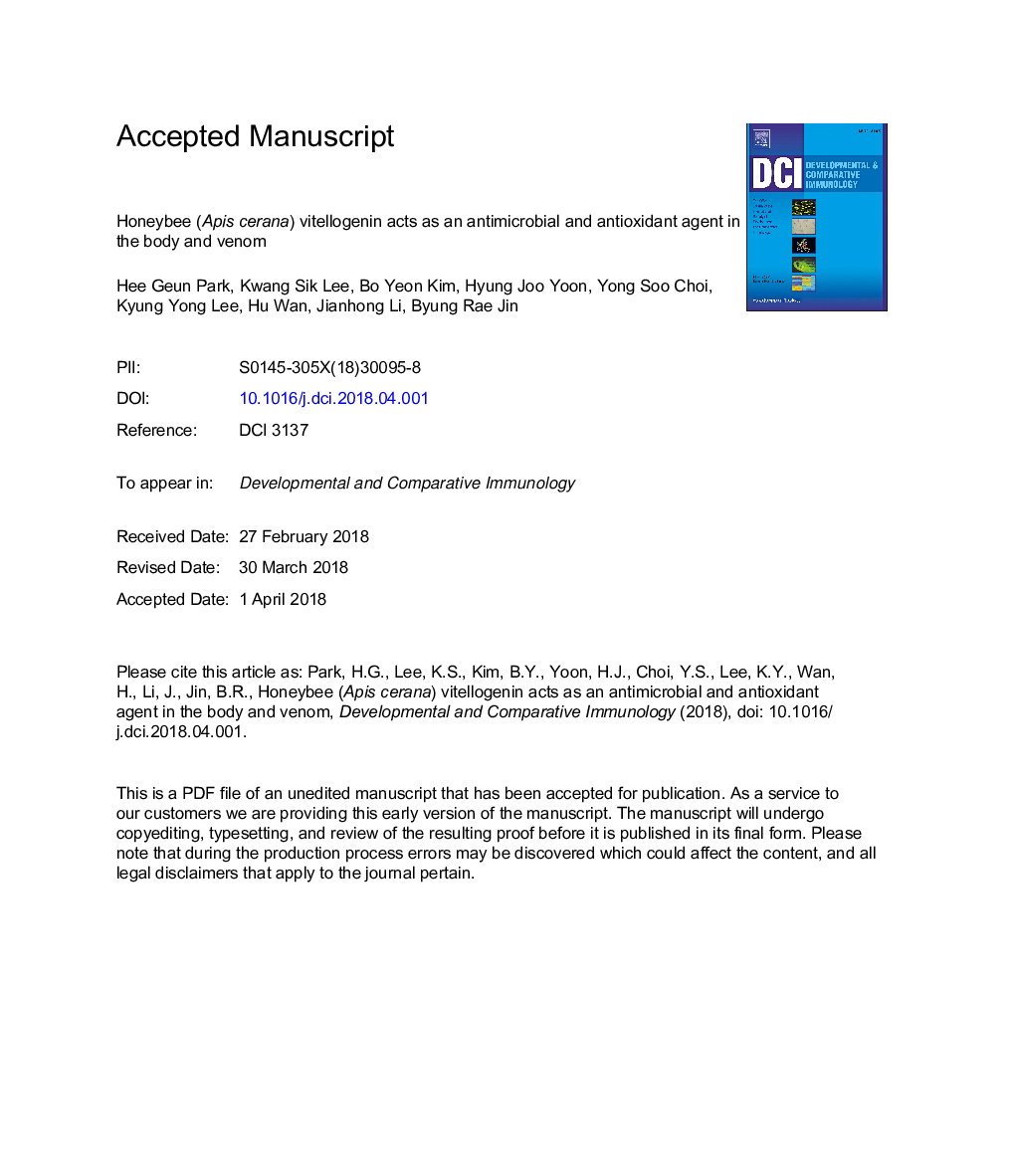| کد مقاله | کد نشریه | سال انتشار | مقاله انگلیسی | نسخه تمام متن |
|---|---|---|---|---|
| 8497684 | 1553547 | 2018 | 49 صفحه PDF | دانلود رایگان |
عنوان انگلیسی مقاله ISI
Honeybee (Apis cerana) vitellogenin acts as an antimicrobial and antioxidant agent in the body and venom
دانلود مقاله + سفارش ترجمه
دانلود مقاله ISI انگلیسی
رایگان برای ایرانیان
کلمات کلیدی
موضوعات مرتبط
علوم زیستی و بیوفناوری
بیوشیمی، ژنتیک و زیست شناسی مولکولی
زیست شناسی تکاملی
پیش نمایش صفحه اول مقاله

چکیده انگلیسی
Honeybee (Apis mellifera) egg-yolk protein vitellogenin (Vg) plays roles in immunity, antioxidation, and life span beyond reproduction, but it also acts as an allergen Api m 12 in venom. Here we established antimicrobial and antioxidant roles of honeybee Vg in the body and venom. Using the cDNA encoding Vg identified from Asiatic honeybee (A. cerana) workers, recombinant A. cerana Vg (AcVg) protein of approximately 180â¯kDa was produced in baculovirus-infected insect cells. In A. cerana worker bees, AcVg was expressed in the fat body and venom gland and was present in the secreted venom. AcVg induced structural damage in microbial cell walls via binding to microbial surfaces and exhibited antimicrobial activity against bacteria and fungi. AcVg protected mammalian and insect cells against oxidative damage through direct shielding of cell membranes. Interestingly, AcVg exhibited DNA protection activity against reactive oxygen species (ROS). Furthermore, the transcript level of AcVg was upregulated in the fat body, but not in the venom gland, of worker bees with antimicrobial peptides and antioxidant enzymes in response to microbial infection and oxidative stress. Our data indicate that AcVg is involved in innate immunity upon infection and in a defense system against ROS, supporting a crucial role of honeybee Vg as an antimicrobial and antioxidant agent in the body and venom.
ناشر
Database: Elsevier - ScienceDirect (ساینس دایرکت)
Journal: Developmental & Comparative Immunology - Volume 85, August 2018, Pages 51-60
Journal: Developmental & Comparative Immunology - Volume 85, August 2018, Pages 51-60
نویسندگان
Hee Geun Park, Kwang Sik Lee, Bo Yeon Kim, Hyung Joo Yoon, Yong Soo Choi, Kyeong Yong Lee, Hu Wan, Jianhong Li, Byung Rae Jin,